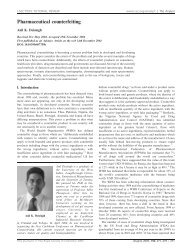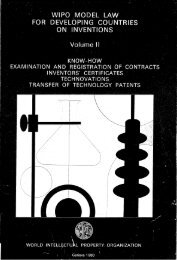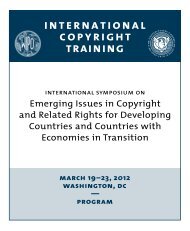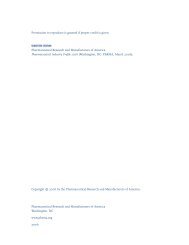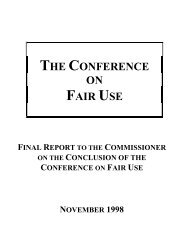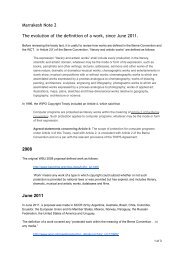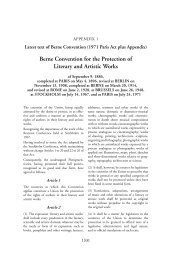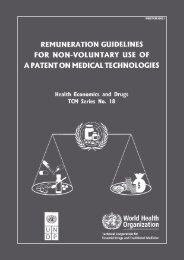how effective are prizes as incentives to innovation? evidence - Druid
how effective are prizes as incentives to innovation? evidence - Druid
how effective are prizes as incentives to innovation? evidence - Druid
- No tags were found...
Create successful ePaper yourself
Turn your PDF publications into a flip-book with our unique Google optimized e-Paper software.
How Effective <strong>are</strong> Prizes <strong>as</strong> Incentives <strong>to</strong> Innovation?Evidence from three 20 th century contests1. IntroductionSeveral years ago, the World Health Organization and the World Bank proposedthe use of <strong>prizes</strong> <strong>to</strong> induce the <strong>innovation</strong> of vaccines that would otherwise not bedeveloped or distributed widely enough (Kremer, 2000). Others have suggested theuse of <strong>prizes</strong> <strong>to</strong> promote <strong>innovation</strong> <strong>to</strong> incre<strong>as</strong>e Third World agricultural productivity(e.g. Kremer and Zwane, 2002, M<strong>as</strong>ters, 2003). In 1990, the $100,000 Loebner prizew<strong>as</strong> offered for the invention a computer whose responses <strong>to</strong> questions cannot bedistinguished from a human’s. The Foresight Institute (in memory of physicistRichard Feynman) h<strong>as</strong> sponsored a grand prize worth at le<strong>as</strong>t $250,000 <strong>to</strong> spurscientific and technical progress in nanotechnology. The $10 million “X Prize” w<strong>as</strong>created in 1996 <strong>to</strong> stimulate the <strong>innovation</strong> of a new generation of launch vehicles <strong>to</strong>carry p<strong>as</strong>sengers in<strong>to</strong> space (National Academy of Sciences, 2000, www.xprize.org.)These developments have been accompanied by heightened economic interest in<strong>prizes</strong> <strong>as</strong> <strong>incentives</strong>. Most of this work is comparative, analyzing the economic effectsof <strong>prizes</strong> in relation <strong>to</strong> patents, procurement contracts, and government subsidies (e.g.Polanvyi, 1943, Wright 1983, de Laat, 1996, Chiesa and Denicolo, 1999, Llobet,Hopenhayn and Mitchell, 2000, Shavell and Ypersele, 2001, Gallini and Scotchmer,2002). Other studies analyze the hypothetical design of future prize systems in <strong>are</strong><strong>as</strong>where it is clear that market failure leaves little alternative <strong>to</strong> <strong>prizes</strong> <strong>as</strong> <strong>incentives</strong> <strong>to</strong><strong>innovation</strong> (e.g. Kremer, 2000; Kremer and Zwane, 2002; M<strong>as</strong>ters, 2003).Our approach differs from this work by adopting a c<strong>as</strong>e-b<strong>as</strong>ed, retrospectiveview. We explore the incentive effects of <strong>prizes</strong> in three twentieth century <strong>innovation</strong>swhere <strong>prizes</strong> played a substantial role: (1) mo<strong>to</strong>rized flight, (2) human-powered flight,and (3) energy-efficient refrigera<strong>to</strong>rs. Rather than seeking <strong>to</strong> predict <strong>how</strong> prize designwill affect the innova<strong>to</strong>r’s behavior in untried <strong>are</strong><strong>as</strong> such <strong>as</strong> vaccines or agriculture,we <strong>as</strong>k: <strong>how</strong> h<strong>as</strong> the design of <strong>prizes</strong> in the p<strong>as</strong>t affected contest outcomes?Our paper is organized <strong>as</strong> follows. Section Two briefly explores the nature of<strong>prizes</strong> <strong>as</strong> <strong>incentives</strong>, and introduces some of the central theoretical “puzzles”discussed in the economic literature on <strong>prizes</strong>. Section Three presents three c<strong>as</strong>estudies which illustrate key differences in the dynamics of <strong>innovation</strong> in <strong>are</strong><strong>as</strong> where2



